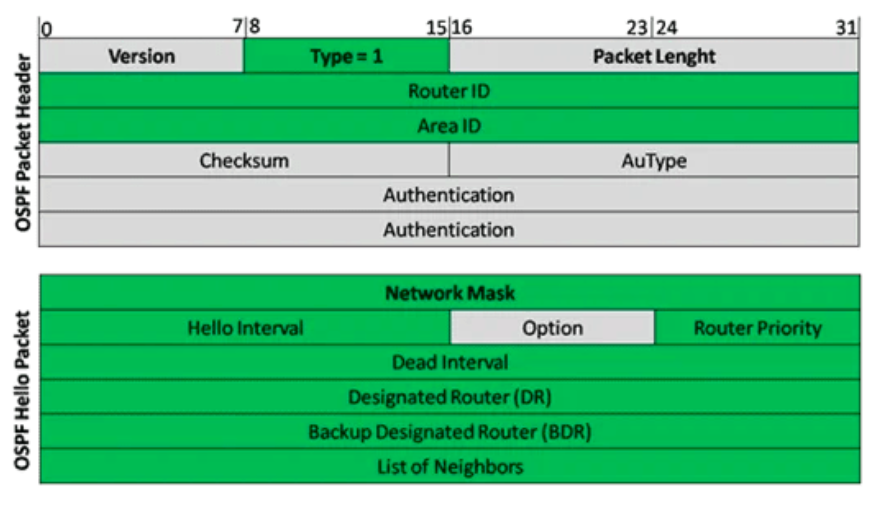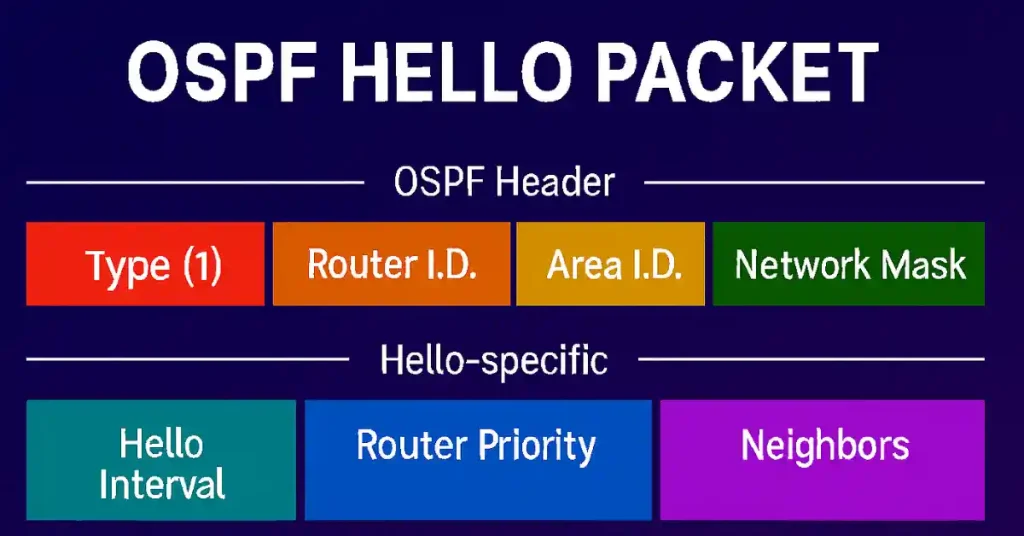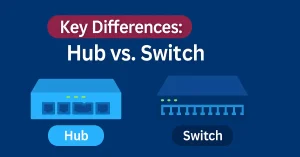OSPF Hello packets (Type 1) are sent periodically on all interfaces, including virtual links, to establish and maintain neighbor adjacencies. Multicast to 224.0.0.5 (AllSPFRouters), these packets enable dynamic discovery of neighboring routers. They advertise parameters for adjacency and elect Designated Routers (DR) and Backup Designated Routers (BDR) on multi-access networks. Point-to-point links skip DR/BDR election. For CCNA and CCNP students, understanding this process is vital for exams and network design. This guide explores Hello packet structure, adjacency formation, and practical applications, updated for 2025 to reflect current Cisco best practices.
Hello Packet Overview
Hello packets are the foundation of OSPF neighbor relationships, ensuring routers can communicate and synchronize their Link-State Databases (LSDBs). Sent every 10 seconds by default on multi-access networks, they use multicast to efficiently reach all routers or DR/BDR, a key concept for enterprise routing.
Hello Packet Structure
The Hello packet contains a standard OSPF header followed by Hello-specific fields. Below is a breakdown of its components:
OSPF Header Fields
- Type: This eight-bit field identifies the packet type:
- Type 1: Hello packet for neighbor discovery.
- Type 2: Database Description (DBD) for LSDB synchronization.
- Type 3: Link-State Request (LSR) for specific LSA requests.
- Type 4: Link-State Update (LSU) for LSA distribution.
- Type 5: Link-State Acknowledgment (LSAck) for LSU confirmation. It’s critical for packet processing.
- Router ID: A 32-bit field, expressed in dotted decimal notation, uniquely identifies the originating router. Typically the highest IP address or a loopback interface, configurable with router-id in OSPF.
- Area ID: A 32-bit field identifies the originated area of the packet, ensuring routing within the correct OSPF area.
- Network Mask: The network mask associated with the sending interface ensures routers are on the same subnet, a prerequisite for adjacency. Mismatched masks prevent neighbor formation.
Note: The above four fields are part of the OSPF header.
Hello-Specific Fields
- Hello Interval: Specifies the frequency, in seconds, at which a router sends Hello packets. The default on multi-access networks is 10 seconds. This interval must match on neighboring routers; otherwise, adjacency fails. Configure with ip ospf hello-interval 10 under the interface.
- Router Priority: Ranging from 0 to 255 (default 1), this field determines DR/BDR election. Higher values win; 0 prevents eligibility. Configure with ip ospf priority 2.
- Dead Interval: Defines the wait time (default 40 seconds, 4x Hello) before declaring a neighbor dead if no Hellos are received. Must match neighbors for adjacency.
- Designated Router (DR): The Router ID of the DR, elected based on priority and Router ID.
- Backup Designated Router (BDR): The Router ID of the BDR, ready to take over if DR fails.
- List of Neighbors: Identifies Router IDs of adjacent routers, confirming bidirectional communication during the 2-Way state.
The figure below illustrates the Hello packet:

Adjacency States
OSPF adjacency formation progresses through distinct states:
- Down: No Hello packet received.
- Init: Unidirectional Hello exchange detected.
- 2-Way: Bidirectional communication established, DR/BDR elected.
- Full: LSDB synchronized, adjacency complete. Understanding these states is essential for CCNA troubleshooting.
Packet Capture Analysis
Use Wireshark to analyze Hello packets:
- Filter: ospf or ip.proto == 89.
- Verify fields like Hello Interval and Neighbor List. This hands-on approach is valuable for CCNP-level skills.
Troubleshooting Hello Packet Issues
Common problems and solutions:
- Adjacency Failure: Mismatched Hello/Dead intervals. Check with
show ip ospf neighbor. - DR/BDR Issues: Incorrect priority. Verify with
show ip ospf interface. - Multicast Loss: Ensure 224.0.0.5 reachability with
ping 224.0.0.5.
These skills are critical for CCNP exam scenarios.
Real-World Case Study: Hello Packet Optimization
A branch office with 20 routers experienced adjacency delays due to mismatched Hello intervals (10s on some, 30s on others). By:
- Standardizing to 10 seconds with
ip ospf hello-interval 10. - Verifying with
show ip ospf neighbordelays reduced by 80%. This reflects CCNP-level optimization challenges as of September 2025.
FAQs
What is the role of OSPF Hello packets in networking?
OSPF Hello packets establish and maintain neighbor adjacencies by multicasting to 224.0.0.5, advertising parameters, and electing DR/BDR on multi-access networks, ensuring dynamic router discovery in enterprise setups.
How does the Hello Interval impact OSPF operations?
The Hello Interval (default 10 seconds) must match on neighboring routers; a mismatch prevents adjacency, configurable with ip ospf hello-interval, critical for network stability.
What determines the Designated Router in OSPF?
The Designated Router is elected based on Router Priority (0-255, default 1) and Router ID, with higher values winning, configurable with ip ospf priority on multi-access links.
Why might OSPF adjacency fail during Hello exchange?
Adjacency may fail due to mismatched Hello/Dead intervals, incorrect subnet masks, or multicast issues. Use show ip ospf neighbor and ping 224.0.0.5 to diagnose.
Conclusion
OSPF Hello packets are crucial for neighbor adjacency and network stability. For CCNA students, focus on basic configuration and states. CCNP students should master field details, troubleshooting, and optimization. With these insights, you’ll excel in Cisco exams and real-world networking.





